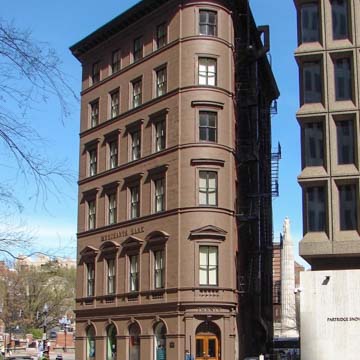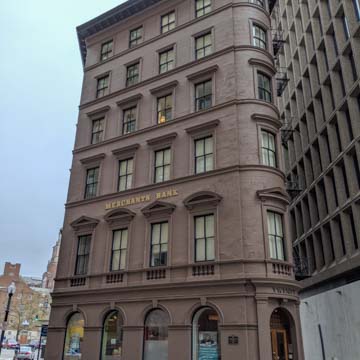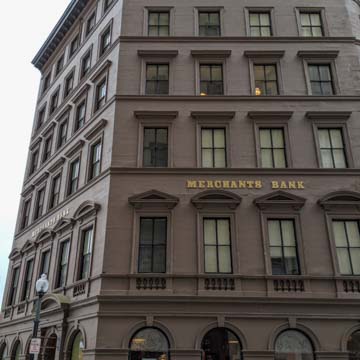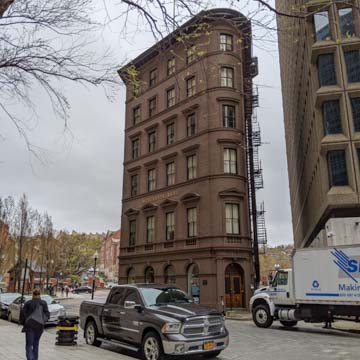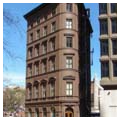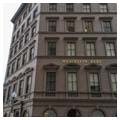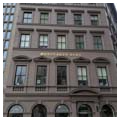Diagonally opposite the old Hospital Trust Building on Westminster Street is another relic of the scale of Providence banking of an earlier day. This and the Bank of North America (
PR19) introduced the Italianate palace as a popular mid-nineteenth-century image for commercial buildings, and the two remain the only pre–Civil War downtown survivors of a commercial type destined to have prolonged effect. At six stories, the Merchants Bank Building was long the tallest building in the city and the first to be retrofitted with an elevator. Like Thomas Tefft before them, Morse and Hall graduated the treatment of their features from ground floor to roof. Turk's Head nicely responds to its wedge shape as an opposed wedge. One creates a funnel into the plaza hub; the
You are here
Merchants Bank Building
1855–1857, Alpheus C. Morse and Clifton A. Hall. 20 Westminster St.
If SAH Archipedia has been useful to you, please consider supporting it.
SAH Archipedia tells the story of the United States through its buildings, landscapes, and cities. This freely available resource empowers the public with authoritative knowledge that deepens their understanding and appreciation of the built environment. But the Society of Architectural Historians, which created SAH Archipedia with University of Virginia Press, needs your support to maintain the high-caliber research, writing, photography, cartography, editing, design, and programming that make SAH Archipedia a trusted online resource available to all who value the history of place, heritage tourism, and learning.














